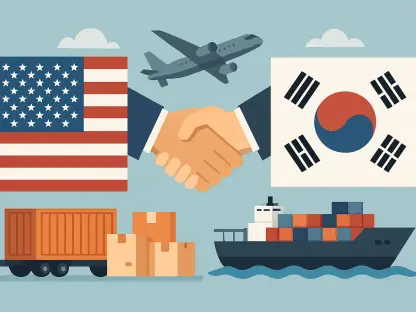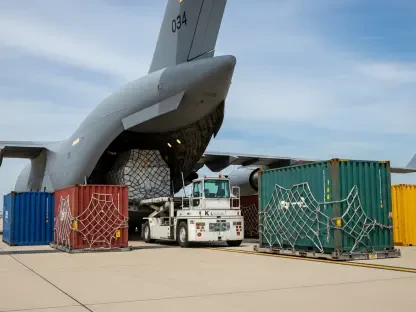In a world where supply chains are strained and geopolitical tensions loom large, the United States has embarked on a bold mission to reshape its position in global trade, confronting a landscape where tariffs cripple exports and regulatory mazes block market access—until now. With groundbreaking framework trade agreements signed with six diverse nations, spanning Europe to Latin America, the US is tearing down barriers and forging pathways for economic growth. This surge of strategic partnerships signals a pivotal moment, raising the question: how will these deals redefine international commerce for American businesses and consumers alike?
The significance of this development cannot be overstated in today’s volatile economic climate. These agreements with Switzerland, Liechtenstein, Argentina, Ecuador, El Salvador, and Guatemala are not mere formalities; they represent a calculated effort to secure supply chains, reduce dependency on single suppliers, and counterbalance the economic influence of rivals in key regions. By slashing tariffs and aligning regulations, the US is positioning itself as a leader in fostering mutual prosperity, ensuring that industries from agriculture to automotive can thrive on a global stage. This story of trade reinvention promises to impact millions, from farmers in the Midwest to tech firms on the West Coast.
A New Era of Trade Partnerships: Why Now?
Amid global uncertainties, the timing of these trade frameworks sparks curiosity about the driving forces behind such a unified push. The US has chosen this moment to announce deals with a mix of European allies and Latin American neighbors, reflecting a strategic response to disruptions in international markets. Economic challenges, including inflationary pressures and supply chain bottlenecks, have necessitated a reevaluation of trade policies to ensure stability and growth for American industries.
This initiative also aligns with a broader shift in diplomatic priorities, focusing on strengthening alliances in critical regions. With geopolitical competition intensifying, particularly in Latin America, the US seeks to solidify economic ties as a counterweight to external influences. These agreements mark a departure from slower, multilateral negotiations, embracing targeted bilateral frameworks that address specific trade barriers with precision.
The momentum behind these partnerships suggests a recognition of urgency. By acting swiftly to secure commitments from six nations, the US aims to create a ripple effect, encouraging other countries to engage in similar dialogues. This proactive stance underscores a commitment to not just react to global trade challenges, but to shape the future of economic collaboration.
The Stakes of Global Trade: Why These Deals Matter
Beyond the headlines, these trade agreements carry profound implications for the US economy and its global standing. With supply chain disruptions exposing vulnerabilities, such as over-reliance on specific regions for critical goods, the need for diversified trade partners has become glaringly evident. These deals tackle that issue head-on by opening new markets and reducing barriers, ensuring American businesses have reliable access to resources and consumers.
Geopolitical dynamics further amplify the importance of these frameworks, especially in Latin America. By deepening ties with countries like Argentina and Ecuador, the US is working to offset the growing economic presence of competitors like China in the Western Hemisphere. This strategic positioning not only bolsters regional stability but also secures long-term economic advantages for American exporters facing stiff international competition.
For domestic stakeholders, the stakes are equally high. These agreements promise to lower costs for consumers through reduced tariffs and create opportunities for industries seeking growth. From agricultural producers eyeing new export markets to manufacturers benefiting from streamlined regulations, the ripple effects of these deals are poised to reshape economic landscapes across multiple sectors, making them a cornerstone of current trade policy.
Breaking Down the Deals: Key Features and Unique Impacts
Delving into the specifics, each of the six framework agreements reveals tailored solutions addressing distinct economic needs. Starting with Switzerland and Liechtenstein, the deal slashes tariffs on Swiss imports from 39% to 15%, coupled with a staggering $200.3 billion investment pledge over five years. In return, the US gains expanded access to European markets for automobiles and medical devices, marking a significant boost for high-value industries.
In Latin America, Argentina’s agreement focuses on eliminating tariffs on natural resources and pharmaceuticals, while broadening market access for US goods like beef and machinery. This pact addresses sector-specific demands, ensuring mutual benefits through regulatory simplifications. Meanwhile, Ecuador’s framework prioritizes agriculture, with tariff reductions on US fruits and nuts, alongside reforms to variable tariff systems, easing long-standing trade frictions.
Further south, El Salvador and Guatemala build on existing regional ties under the Dominican Republic-Central America Free Trade Agreement (DR-CAFTA). Both countries have committed to streamlined regulations, accepting US safety standards for products like pharmaceuticals, and boosting agricultural trade by removing labeling barriers. These deals highlight a focus on regulatory alignment, ensuring smoother market entry for American exporters while fostering economic integration in Central America.
Voices from the Field: Insights and Expertise on Trade Wins
To grasp the real-world impact of these agreements, perspectives from industry leaders and experts provide crucial context. A senior analyst from the US Chamber of Commerce noted, “These tariff reductions and regulatory alignments could unlock up to 20% growth in export volumes for key sectors over the next three years.” Such data underscores the potential for substantial economic gains, particularly for small and medium-sized enterprises eager to tap into new markets.
American farmers, a vital demographic in this trade equation, are already expressing optimism. A Midwest soybean grower shared, “Access to markets like Ecuador without punitive tariffs means a lifeline for family farms struggling with domestic oversupply.” This sentiment reflects the tangible benefits for rural economies, where expanded export opportunities can stabilize incomes and encourage reinvestment in agricultural innovation.
Business leaders also highlight the transformative potential of foreign investment, particularly from Switzerland. A tech executive based in California remarked, “The pledged $200.3 billion could fuel advancements in medical devices, creating jobs and strengthening our competitive edge.” These voices collectively paint a picture of hope and opportunity, illustrating how these trade frameworks resonate across diverse sectors of the US economy.
Navigating the Future: Strategies for Leveraging New Trade Opportunities
Looking ahead, stakeholders across the spectrum can take actionable steps to maximize the benefits of these trade developments. For US exporters, preparing for streamlined regulatory processes in Latin America is critical. Aligning products with recognized standards, such as those set by the FDA for medical devices or Federal Motor Vehicle Safety Standards for automobiles, can expedite market entry and reduce compliance costs in countries like Guatemala and El Salvador.
Small businesses, often the backbone of local economies, stand to gain by exploring new agricultural markets in regions now more accessible due to tariff cuts. Engaging with trade associations to understand specific opportunities in Ecuador, for instance, could open doors for niche products like specialty nuts or organic produce. Such proactive measures ensure that even smaller players can compete on a global stage, leveraging these agreements for growth.
On a broader scale, policymakers are encouraged to advocate for sustained bilateral negotiations to build on these frameworks. Prioritizing long-term supply chain resilience in the Western Hemisphere through continued dialogue with Latin American partners can safeguard against future disruptions. This strategic foresight, combined with active participation from businesses and trade bodies, will be essential to cementing the US as a leader in global trade innovation.
In reflecting on this transformative chapter, the forging of these trade agreements stands as a testament to strategic vision in addressing economic challenges. The partnerships with Switzerland, Liechtenstein, Argentina, Ecuador, El Salvador, and Guatemala not only dismantled barriers but also built bridges for collaboration. Moving forward, the focus should remain on nurturing these relationships, ensuring that businesses adapt to new market realities, and advocating for policies that sustain this momentum. The path ahead demands vigilance and engagement to translate these frameworks into lasting prosperity for all involved.









